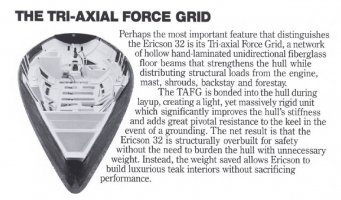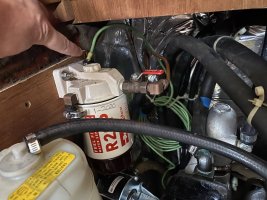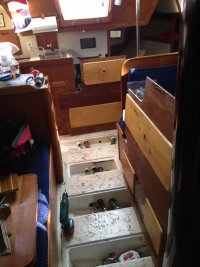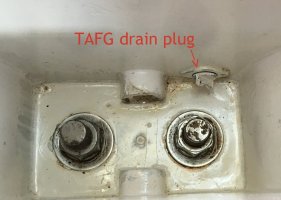TAGF stands for "Tri-Axial Force Grid," the marketing name for the stiffness structure inserted into the hull and to which the stays and the furniture attaches. It's highly regarded, but does create complication for bilge drainage and conduit.
I don' see why you'd need a 1" or larger pump hose for a small electric bilge pump. They're just there to suck out rainwater.
We don't have a manual showing the differences of the 32-200 TAGF from the 32-3 (which is a near sistership and does have a manual available in Forum Resources). Need a 32-200 owner to comment.

I don' see why you'd need a 1" or larger pump hose for a small electric bilge pump. They're just there to suck out rainwater.
We don't have a manual showing the differences of the 32-200 TAGF from the 32-3 (which is a near sistership and does have a manual available in Forum Resources). Need a 32-200 owner to comment.






